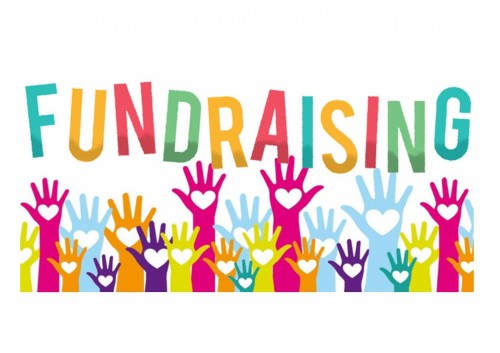Fundraising Consultant: Professional Assistance to Improve Your Nonprofit's Fundraising
Wiki Article
The Function of Area Engagement in Nonprofit Fundraising: Structure Lasting Relationships for Sustainable Support
Neighborhood involvement is significantly recognized as an essential component of effective not-for-profit fundraising. The methods and techniques utilized to involve neighborhoods differ extensively, elevating crucial questions concerning performance and impact.Understanding Area Involvement
Neighborhood engagement is a crucial element of successful nonprofit fundraising initiatives. It describes the techniques and tasks that companies utilize to get in touch with their regional communities, fostering connections that are mutually useful. Recognizing community involvement includes acknowledging its multifaceted nature, that includes partnership, outreach, and engagement. Nonprofits need to recognize essential stakeholders-- such as area participants, neighborhood organizations, and various other organizations-- to develop efficient involvement approaches.Efficient community involvement is predicated on energetic listening and responsiveness to the demands and interests of the neighborhood. This process includes obtaining responses, comprehending neighborhood dynamics, and making certain that the company's goal lines up with neighborhood concerns. Involving the community can take numerous types, including public conferences, volunteer possibilities, and collaboration initiatives, each created to motivate participation and investment in the organization's objectives.
In addition, neighborhood engagement must be approached as a continuous dialogue as opposed to an one-time initiative. By fostering a comprehensive setting where community voices are heard and valued, nonprofits can construct a strong foundation for future fundraising ventures. Ultimately, a deep understanding of neighborhood involvement equips companies to create authentic connections that enhance their total efficiency and sustainability.
Benefits of Strong Relationships
Solid partnerships formed with neighborhood interaction yield various benefits for nonprofit fundraising initiatives. Primarily, these partnerships foster trust and integrity, vital parts in encouraging benefactors to add. When possible fans see a not-for-profit proactively included in their neighborhood, they are most likely to count on its goal and impact.
Additionally, these relationships help with efficient interaction. Nonprofits can take advantage of their links to share stories of influence, updates, and needs, making certain that supporters continue to be enlightened and engaged. This open line of interaction not just enhances bonds yet also motivates word-of-mouth promo, expanding the not-for-profit's reach.
Finally, strong area connections can attract new companions and enrollers. Companies and people are extra inclined to straighten with organizations that demonstrate purposeful area involvement, offering extra resources and assistance that can considerably improve fundraising capabilities. Therefore, growing robust connections via community involvement is integral to a nonprofit's long-lasting fundraising success.
Methods for Effective Involvement
Exactly how can nonprofits successfully involve their communities to improve fundraising efforts? Establishing targeted strategies is vital for cultivating significant links. Initially, leveraging social networks platforms enables companies to share their objective dynamically and interactively, getting to a wider audience. Normal updates, involving material, and calls-to-action can galvanize neighborhood passion and engagement.2nd, organizing area events, such as workshops, volunteer chances, or fundraising drives, assists in face-to-face communication, enabling nonprofits to showcase their influence and efforts. These events not just raise funds yet also cultivate connections and enable neighborhood participants to involve straight with nonprofit fundraising ideas the reason.
Third, executing personalized communication techniques can improve involvement. Tailoring messages to certain benefactor sectors based on passions and previous contributions cultivates a feeling of belonging and financial investment in the organization's goal.
Last but not least, creating collaborations with local companies and neighborhood leaders can amplify outreach initiatives. Collective initiatives can improve exposure and reliability, demonstrating a collective commitment to the neighborhood's wellness. By incorporating these techniques, nonprofits can construct enduring partnerships that improve fundraising initiatives and drive lasting assistance.
Measuring Involvement Success
While engaging the neighborhood is important for successful nonprofit fundraising, gauging the efficiency of these interaction initiatives is equally crucial. Establishing clear metrics allows organizations to examine exactly how well they are attaching with their audience and achieving their fundraising objectives. Secret performance signs (KPIs) such as contributor retention rates, volunteer engagement levels, and engagement on social media systems give tangible information for examination.
Consistently examining these metrics enables companies to pivot their approaches when essential, ensuring that area engagement continues to be aligned with their general mission. Furthermore, sharing these results with stakeholders fosters transparency and builds trust, urging further community participation. Inevitably, a durable measurement structure not only informs future fundraising efforts however additionally strengthens the partnership in between the nonprofit and its supporters, laying the groundwork for lasting success.
Instance Researches in Neighborhood Influence
Countless study show the profound influence that community interaction can have on nonprofit fundraising success. One notable example is the "Something to chew on" initiative, where a neighborhood food bank partnered with companies and institutions to host community suppers. These events not just increased funds however likewise fostered a feeling of belonging among individuals, significantly raising donor retention rates.Another compelling situation is the "Green Spaces Project," which involved local citizens in the revitalization of metropolitan parks. This initiative not just gathered financial backing from regional organizations but also cultivated a volunteer base that added to continuous upkeep and shows. The feeling of possession and satisfaction amongst area members converted right into sustained contributions.
In the realm of arts, the "Art for All" project effectively involved local artists and patrons to create collaborative art installations, causing raised presence and contributions for a regional arts nonprofit.
These examples highlight that when nonprofits prioritize neighborhood involvement, they can develop lasting partnerships that improve fundraising initiatives, making certain lasting support and cultivating a vibrant neighborhood society. Such instances demonstrate that community involvement is not just a method however a vital column of nonprofit success.
Final Thought
To conclude, neighborhood interaction is indispensable to the success of nonprofit fundraising efforts. By promoting strong partnerships with neighborhood stakeholders, companies enhance trust fund and reliability, resulting in boosted donor retention and commitment. Executing effective involvement approaches and measuring their influence guarantees that nonprofits can adjust and prosper. Inevitably, a durable structure of community assistance not only amplifies fundraising potential however likewise grows a culture of cooperation, crucial for achieving long-term business objectives and sustaining purposeful impact.Nonprofits should recognize vital stakeholders-- such as neighborhood members, regional businesses, and various other companies-- to develop reliable involvement strategies.

In conclusion, neighborhood interaction is important to the success of not-for-profit fundraising efforts.
Report this wiki page